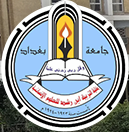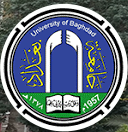Abstract
In recent years, global university rankings have gained popularity as a means of evaluating the quality of higher education institutions because they provide valuable insights into the best institutions around the globe; therefore, employers, academics, and students use this ranking to decide from where to hire new employees, where to pursue higher education, and where to conduct research. This holds true for Iraqi universities as well, as they strive to assess their standing and competitiveness on a global scale. In this study, the findings of Baghdad and Babylon universities in the Times Ranking are analyzed and compared. Additionally, the factors, that affected their ranking, over five years (2017-2022) are also examined. This study aims to shed light on the advantages and disadvantages of every educational institution by analyzing a variety of variables, including teaching, international outputs, industry outcome, quality of research, academic performance metrics, and citations. It also strives to identify the features that set each one apart from the others. In order to conduct a comparative analysis, this study use the data of the Times World University Rankings, which is regarded as one of the most trustworthy and that provide accurate indicators of any university performance and Elsevier's Scopus databases. The results of this study point out areas for development and give legislators, administrators, and prospective students a thorough grasp of the major factors affecting these two universities’ rankings.
Article Type
Article
First Page
358
Last Page
386
Publication Date
12-15-2023
Creative Commons License

This work is licensed under a Creative Commons Attribution 4.0 International License.
Recommended Citation
Suleiman, Ahmed Kanaan
(2023)
"A Comparative Analysis of the Baghdad and Babylon Universities Exploring Factors Affecting Their Competitiveness in World University Rankings,"
Alustath Journal for Human and Social Sciences: Vol. 62:
Iss.
4, Article 19.
DOI: 10.36473/ujhss.v62i4.2279
Available at:
https://alustath.researchcommons.org/journal/vol62/iss4/19










